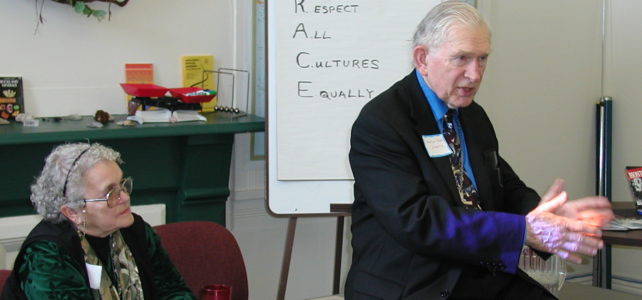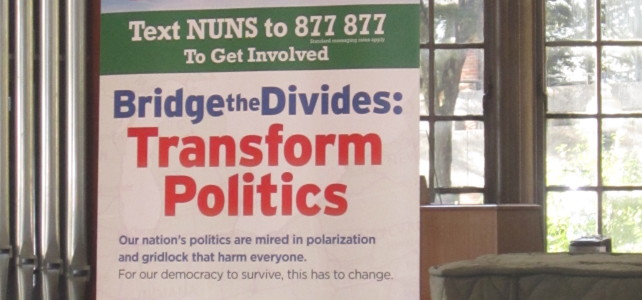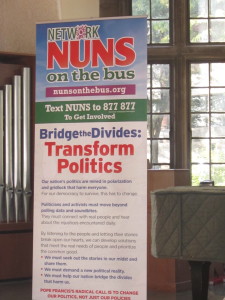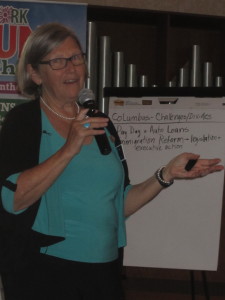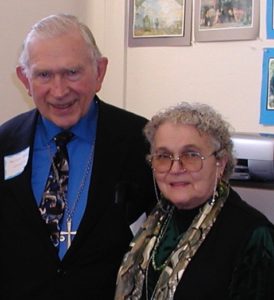
Rev. Robert and Jeannie Graetz Photo: Mary van Balen
I browse New York Times (NYT) headlines in the mornings even though the news is often depressing and stirs anger and frustration rather than wonder at new-day possibilities. But one morning in August, I was surprised by a headline and photo of an old friend, Rev. Robert Graetz. “Bombed by the K.K.K. A Friend of Rosa Parks. At 90, This White Pastor Is Still Fighting,” it read. The article, by Alan Blinder, included an interview with Robert and his wife, Jeannie.
After being ordained a Lutheran minister in Columbus Ohio, he was assigned to his first pastorate in 1955—Trinity Lutheran, a predominantly Black congregation in Montgomery, Alabama. There he was practically the only white minister who publicly supported the bus boycott and as the NYT headlines reveal, he and his family paid a price. According to Jeannie, threats began “As soon as the Klan and the Klan-type people knew that we were involved.”
Back in Ohio
The Graetzes moved back to Ohio a few years later. They lived in a simple house nestled in the woods of southern Ohio. Robert wrote a monthly column, part of the “Point of View” series that ran during the 70s and 80s in the Catholic Times, the diocesan newspaper of Columbus, Ohio.
I knew Robert from reading his columns (and his first book, “Montgomery: A White Preacher’s Memoir”), but in October 1992, we met at an alternative observance of Columbus Day. The 4-day event was led by Indigenous Peoples. Covering it for the Catholic Times, I saw Robert, and we shared lunch and good conversation.
Rev. Graetz spoke at some Martin Luther King Jr. Day services I attended over the years. So, in the early 2000s, when I was an adult educator for a family literacy program severing poor, mostly single, young parents, Robert was my first choice to be an MLK Day speaker for our students.
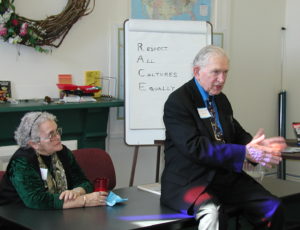
Photo: Mary van Balen
He and Jeannie came and shared stories, not only of their time and roles in Montgomery and the bus boycott, but also of their continued work for causes of justice and equality. It included the fight against racism and embraced other forms of injustice: sexism, income disparity, oppression of minorities based on ethnicity, sexual orientation, or anything that separates persons as “other.” Their message was written large on a tablet displayed beside them as they spoke: R.A.C.E.– Respect All Cultures Equally.
It wasn’t only the “big” message that touched my students. It was the little things. “Did you see how Jeannie slid that cough drop across the table to him when he started to cough?” they asked. Her simple act deeply moved those young parents who had been abused for most of their lives. They insisted that we drive up to Columbus to hear him preach at St. Philips Lutheran Church.
I enjoyed reading the NYT article that morning and learned that the Graetzes now live in Montgomery. It was good to remember people who inspired. Who walked the walk. People who did their best to love as Jesus loved and to take a stand against oppression and injustice when they saw it, despite danger to themselves and their family.
Divisiveness, violence, and hate that swirl around us today are disturbing. When asked for his thoughts about what was happening in Alabama and across our country, Robert said it’s “…one of the most dangerous periods of time I’ve ever been through in this world.” Sobering from one who has lived through tumultuous years of the Civil Rights Movement.
Hope
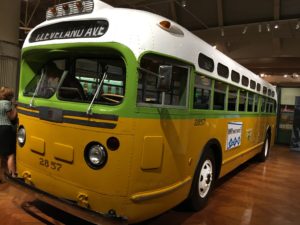
The bus Rosa Parks was riding when she refused to give up her seat. Now at the Henry Ford Museum, Dearborn, MI.
Yet there is hope. During a 2011 PBS interview, Robert observed that many people thank Jeannie and him for what they did. He’s quick to point out that it wasn’t only what “they” did. He gives credit to the Women’s Political Council made up of Black American women who started the bus boycott and all those who were involved. “It was 50,000 Black people who stood together, who walked together, who worked together, who stood up against oppression,” he said. “If it had not been for this whole body of people working together, this would not have happened.”
At the end of the NYT article, he said that seeing two people getting together and smiling was a source of optimism for him.
I take these two thoughts to heart. Today we need to “be peace” where we are, in the little moments, showing love and support. Like Jeannie and the cough drop, you never know when small kindnesses will touch someone’s heart.
But we also need to work together as we speak out and stand up for justice today.
© 2018 Mary van Balen
Similar column published in the Catholic Times, Columbus, Ohio. 9.9.2018
